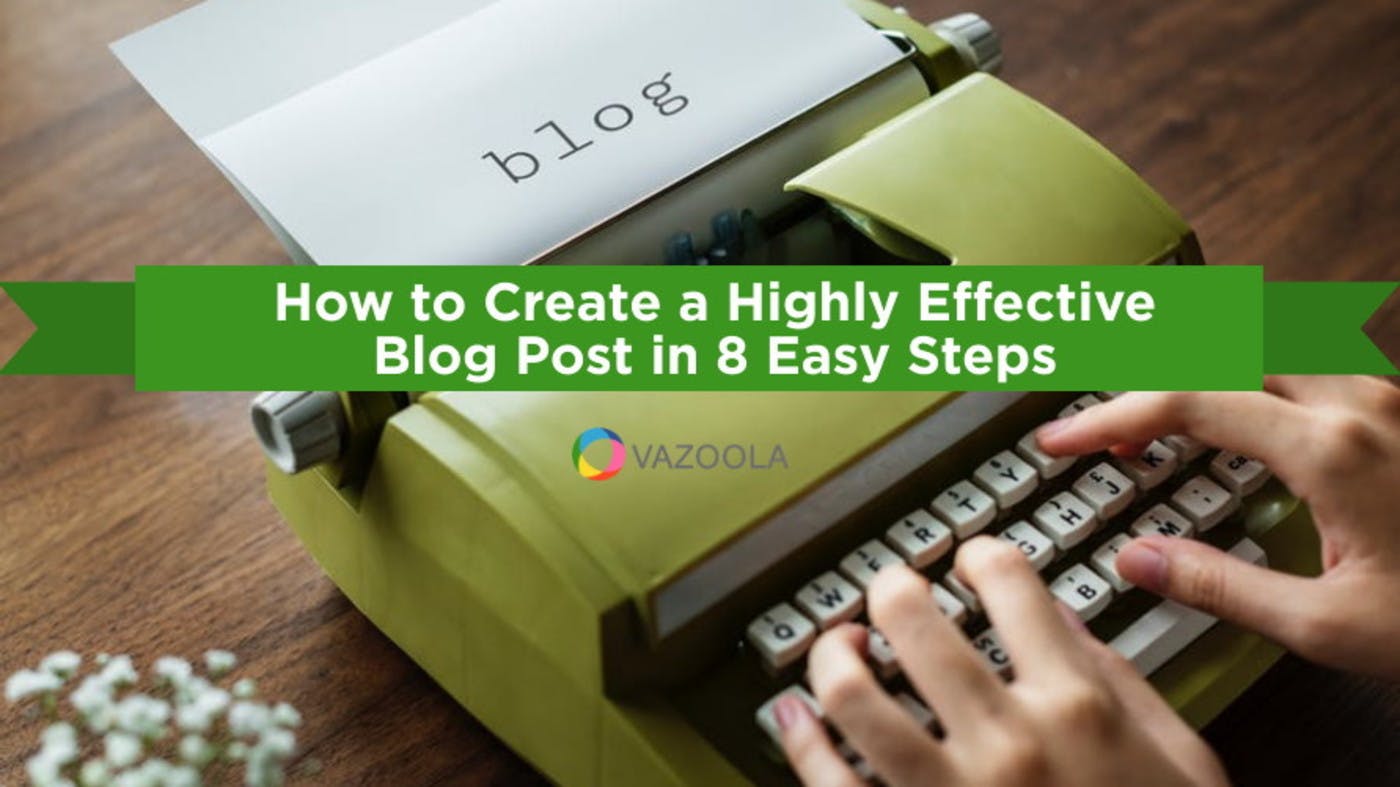How to Create a Highly Effective Blog Post in 8 Easy Steps
Aug 12, 2019
Written by Casey Bjorkdahl

Casey Bjorkdahl is one of the pioneering thought leaders in the SEO community. In 2010, Casey co-founded Vazoola after working for a Digital Marketing Agency for five years in New York City. Vazoola is now one of the fastest growing and most widely recognized SEO marketing firms in the country.

As more people and businesses run a blog, the quality of the blog content is becoming more critical.
Simply having a blog isn't enough. Bloggers should create and follow a blogging strategy that produces high-quality content and helps build your reputation and authenticity.
Below are eight useful tips for writing a blog post that delivers.
1. Pay Attention to What Your Customers Say
Save yourself a lot of time and frustration when it comes to thinking about valuable blog content. Listen to what your customers have to say about you and your business.
Your customers are asking questions about your products or services. Developing and writing blog content around the answers to their questions will attract new readers and keep current ones happy.
2. Plan Your Post
Just as you created a thorough plan for your business, you should take the same approach with all your blog posts.
Proper planning speeds up the writing process and better ensures you do everything right the first time.
Before you start writing, create an outline of:
· Your blog post introduction
· The different sections an individual post needs such as headings
· A conclusion that ties everything together.
Outlines and bullet points help you eliminate blocks of text to trim the fat, making it easier for people to want to read your blog post from top to bottom without skipping anything.
3. Research Is Essential
As you plan your post, be sure you plan on doing some research. Specifically, make use of search engines to determine if someone has already tackled the focus of your blog post.
Even if someone has, that doesn’t necessarily mean you won’t be able to capture readers attention.
What it does mean is you’ll need to tackle the subject from a different angle and put your unique spin on the subject.
Besides avoiding duplicate content, another reason to research is to learn more about whatever it is that you want to talk about in your post.
Being factual makes content marketing that much easier, and it’s easier to build trust.
4. Proofread Your Post
Imagine having one of the most well-planned and well-researched blog posts only to lose your audience’s interest with grammatical errors.
Run your post through spell check and free apps designed to check spelling errors, wrong word usage, and the like.
If you want to go the extra mile, you can hire a professional proofreader to read your posts before publishing them, making them easier to read.
5. Include a Call to Action
Is there anything specific you want readers to do after reading your post? A successful blog post needs a clear call-to-action.
For instance, you can pose a question at the end of your blog and encourage readers to interact in the comments section.
Or perhaps the goal of your post is to churn up interest in a new product or service. Is there a contact form you’d like readers to fill out, or a newsletter for them to read?
It helps to have an effective call-to-action at the end of each post. Even if you just ask readers to share your post on social media if they found the material relevant, helpful, and valuable.
6. Write a Post That’s Easy to Read
Focus on flow while you plan your posts. Blocks of texts can deter readers. Be sure to use headers and subheaders to divide sections.
Make sure your content is easy to read on mobile devices. Shorter sentences and bullet points work well.
Creating a video that summarizes the key points of your post presents another way to deliver your message.
It also appeals to visual learners so you might attract new readers who prefer to watch than read.
Your efforts are sure to pay off.
7. Write a Punchy Title
Imagine writing an effective post only to have a few people read it because you used a lackluster title.
You may feel tempted to use a title that has an air of mystery, to make it practically irresistible to pass up.
Doing so could backfire. Instead, craft a title that’s as specific as possible as to what readers will see.
8. Add Visuals
Capture your readers’ interest better with visuals. This can include images as well as video, as was mentioned above.
Are any of these tips new to you? Be sure to put them to good use the next time you’re ready to write a post.

